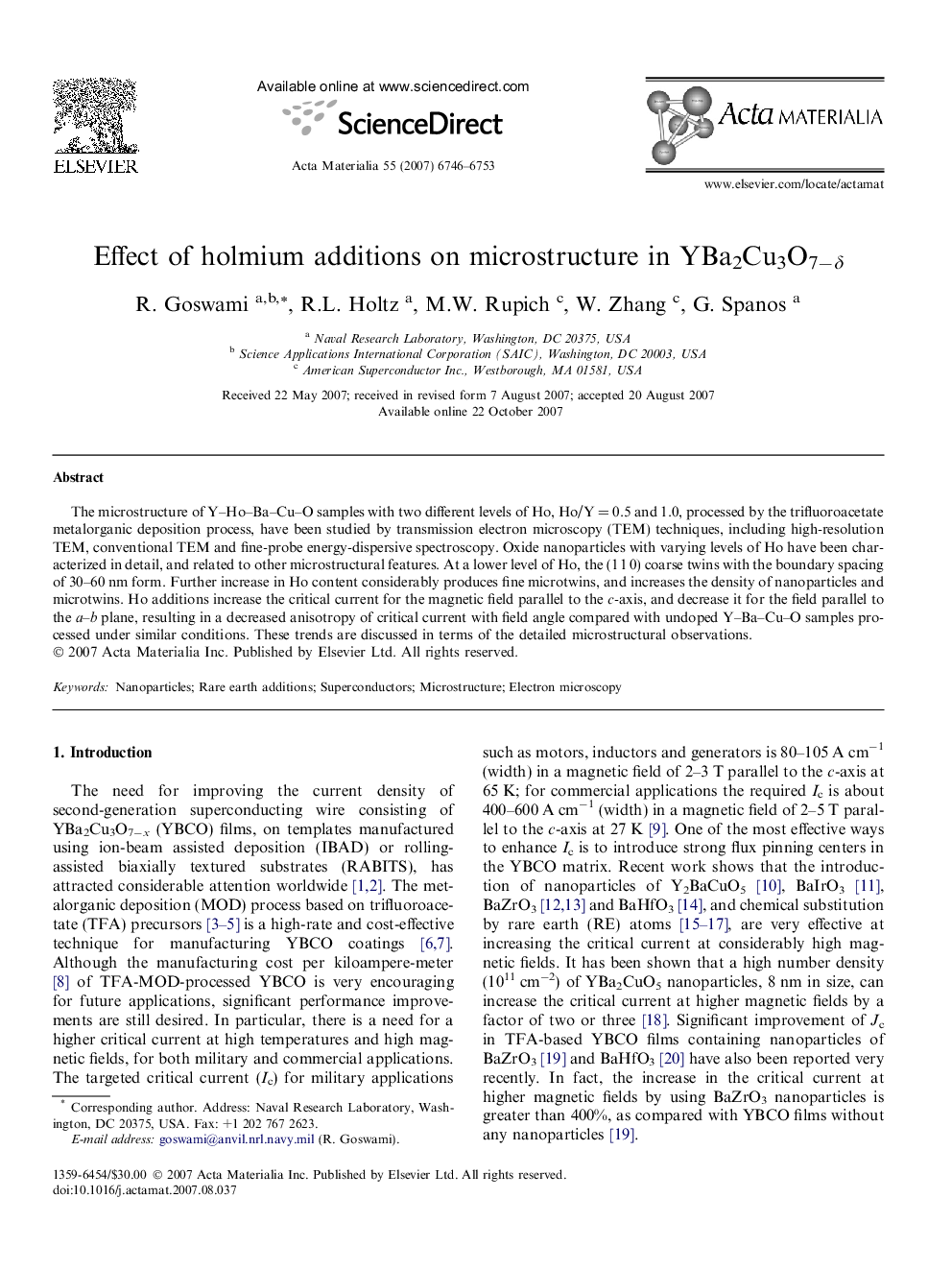| Article ID | Journal | Published Year | Pages | File Type |
|---|---|---|---|---|
| 1449251 | Acta Materialia | 2007 | 8 Pages |
Abstract
The microstructure of Y-Ho-Ba-Cu-O samples with two different levels of Ho, Ho/YÂ =Â 0.5 and 1.0, processed by the trifluoroacetate metalorganic deposition process, have been studied by transmission electron microscopy (TEM) techniques, including high-resolution TEM, conventional TEM and fine-probe energy-dispersive spectroscopy. Oxide nanoparticles with varying levels of Ho have been characterized in detail, and related to other microstructural features. At a lower level of Ho, the (1Â 1Â 0) coarse twins with the boundary spacing of 30-60Â nm form. Further increase in Ho content considerably produces fine microtwins, and increases the density of nanoparticles and microtwins. Ho additions increase the critical current for the magnetic field parallel to the c-axis, and decrease it for the field parallel to the a-b plane, resulting in a decreased anisotropy of critical current with field angle compared with undoped Y-Ba-Cu-O samples processed under similar conditions. These trends are discussed in terms of the detailed microstructural observations.
Related Topics
Physical Sciences and Engineering
Materials Science
Ceramics and Composites
Authors
R. Goswami, R.L. Holtz, M.W. Rupich, W. Zhang, G. Spanos,
